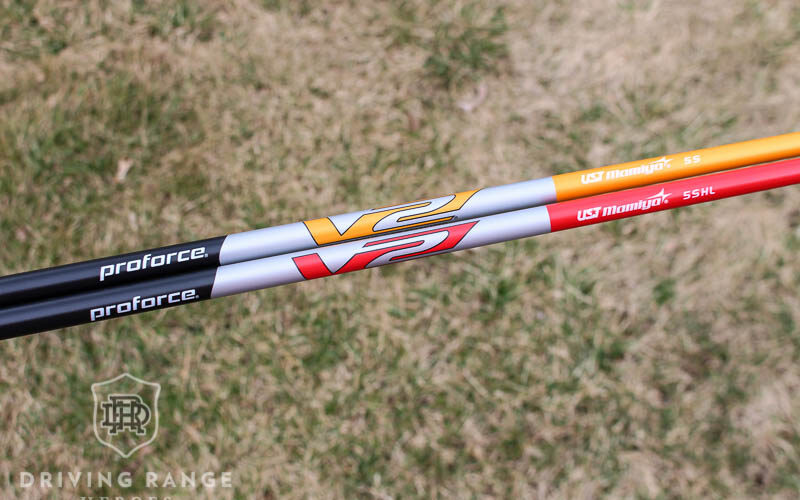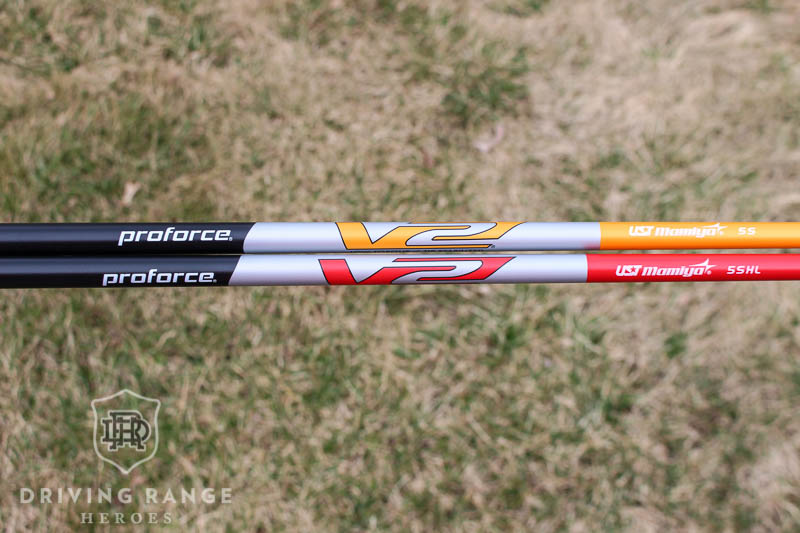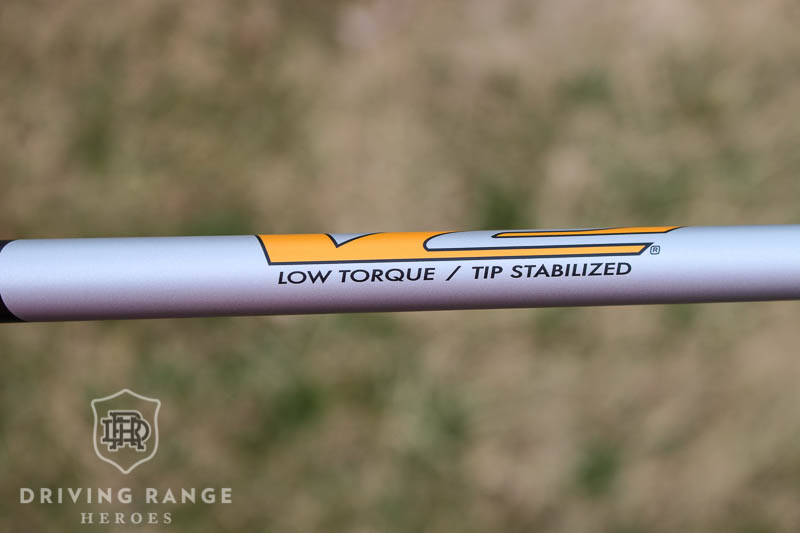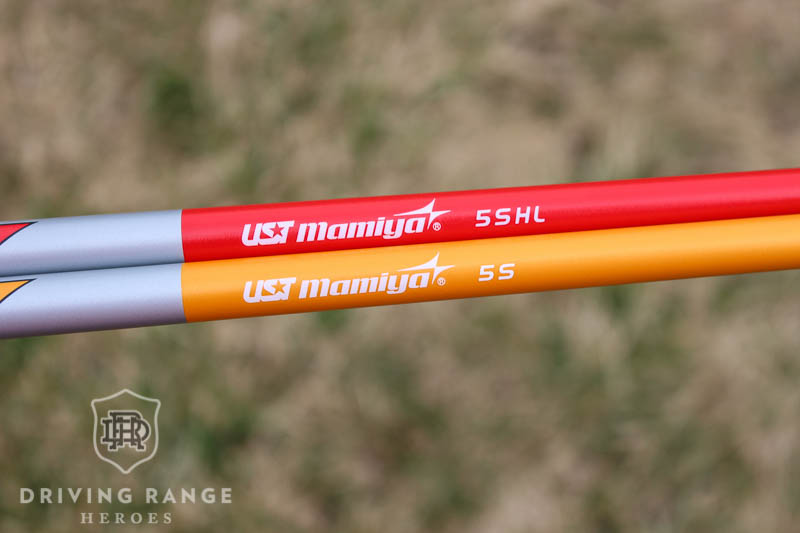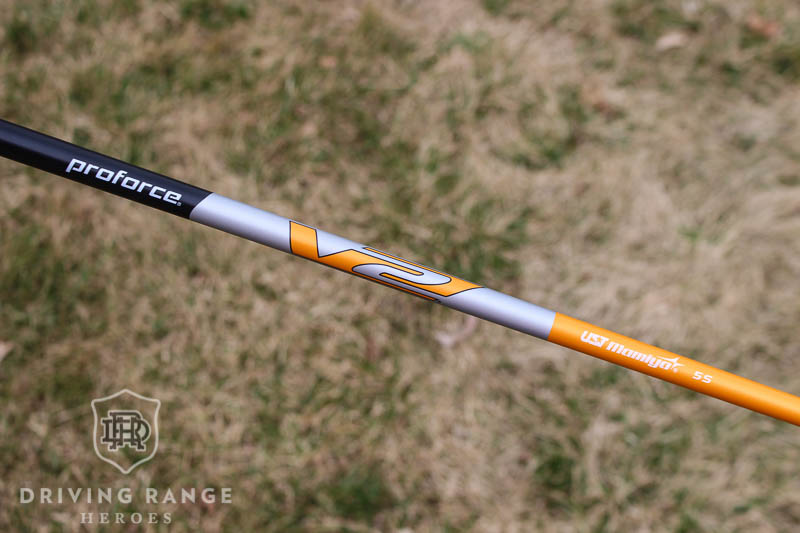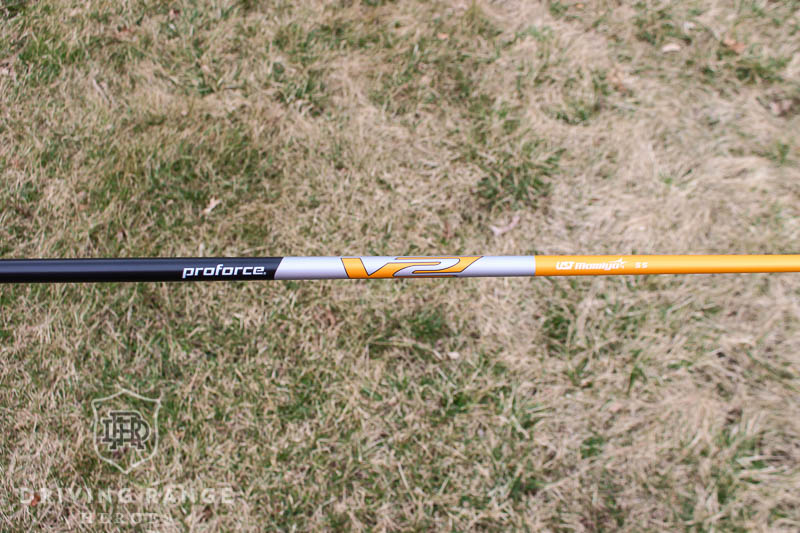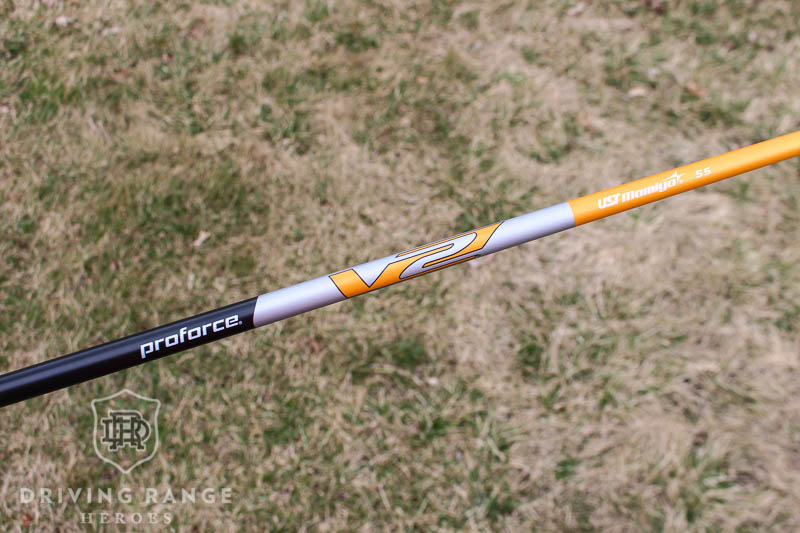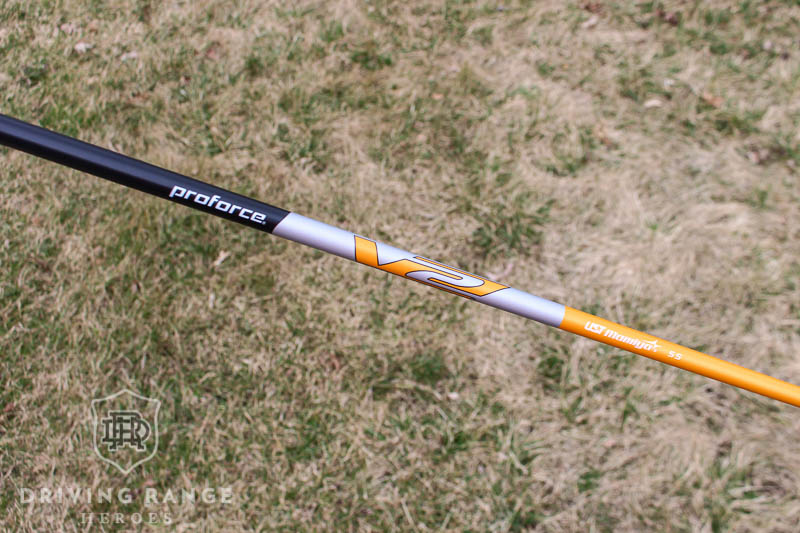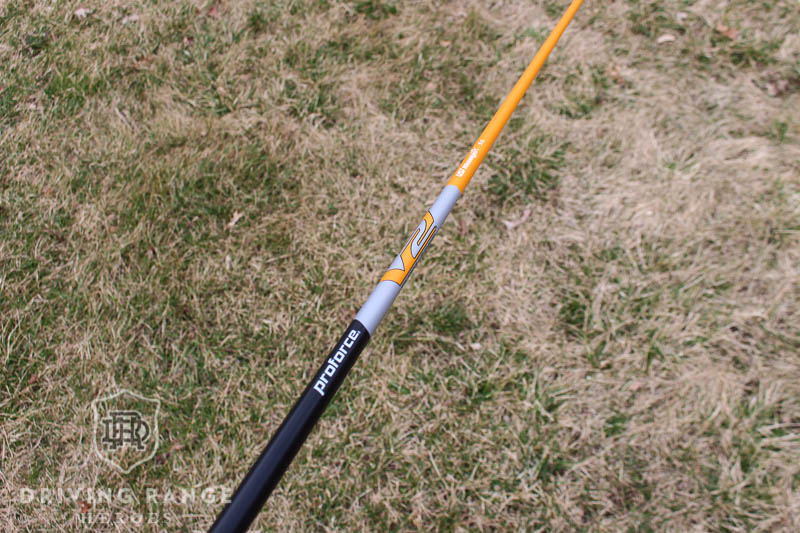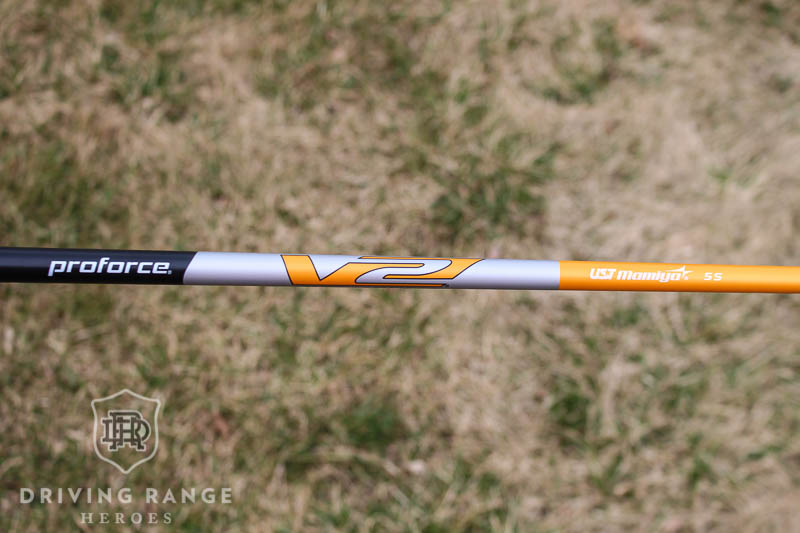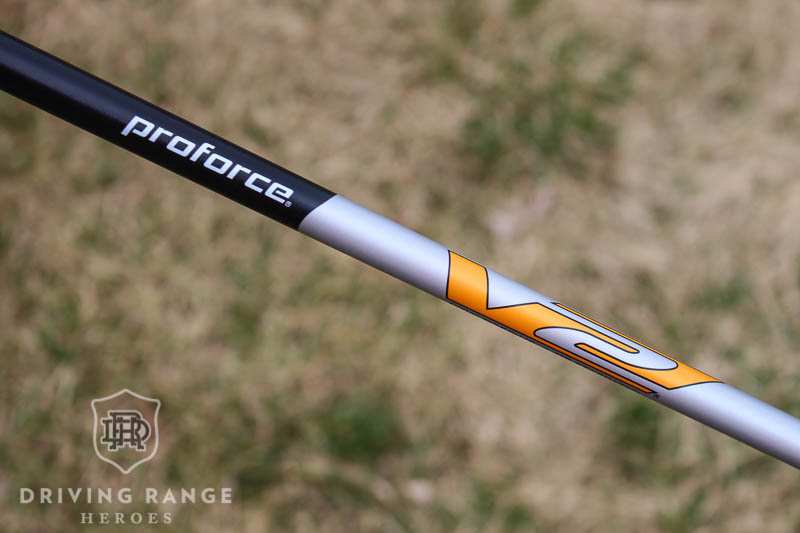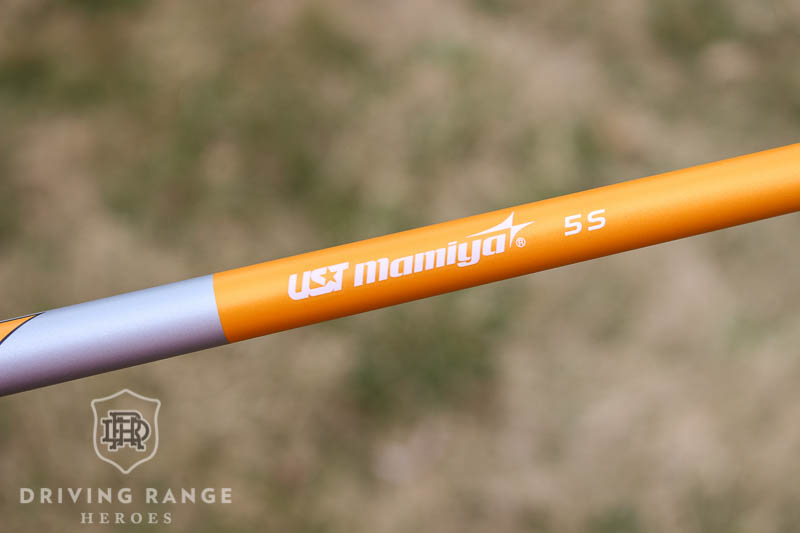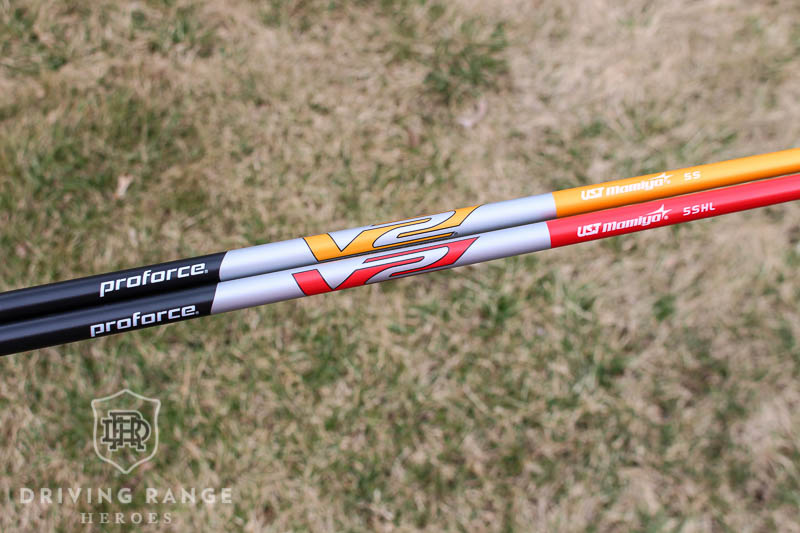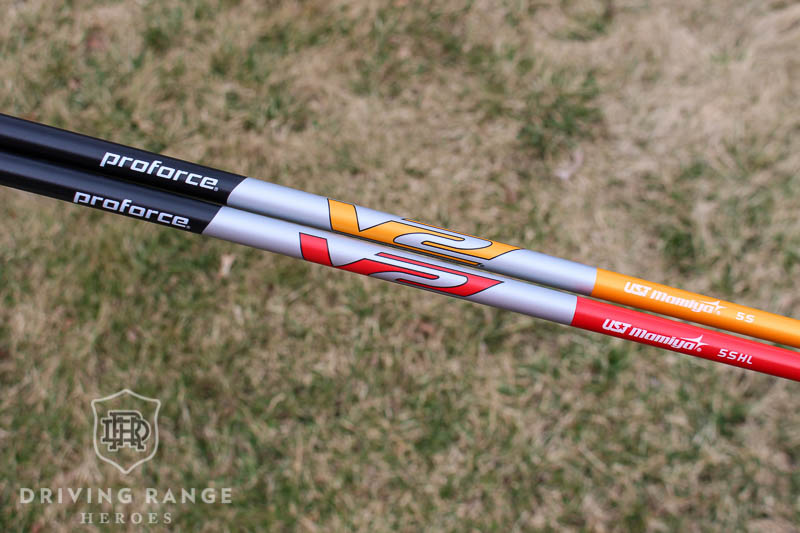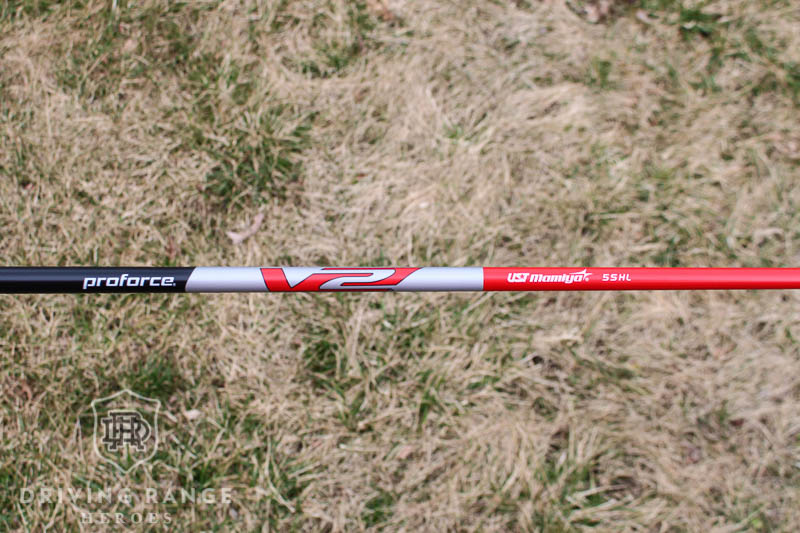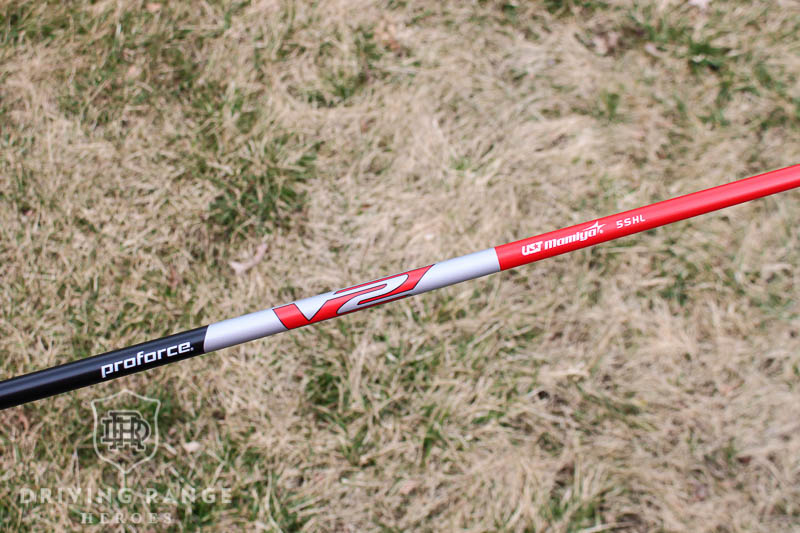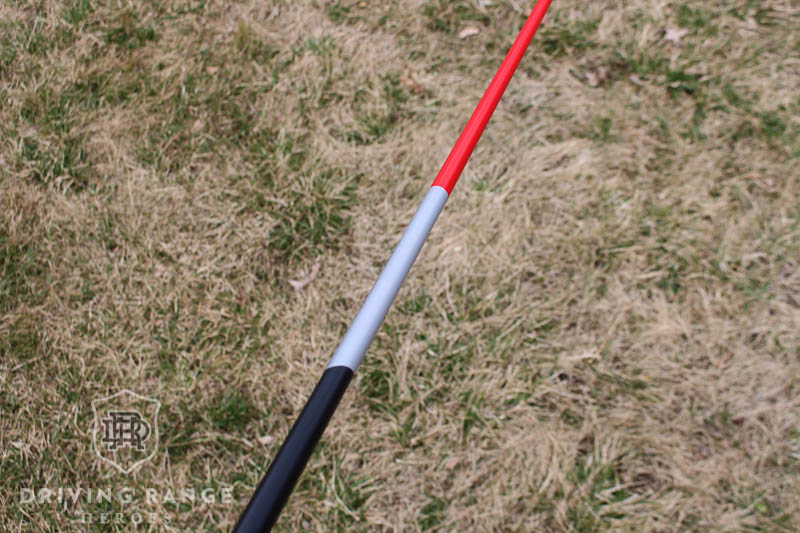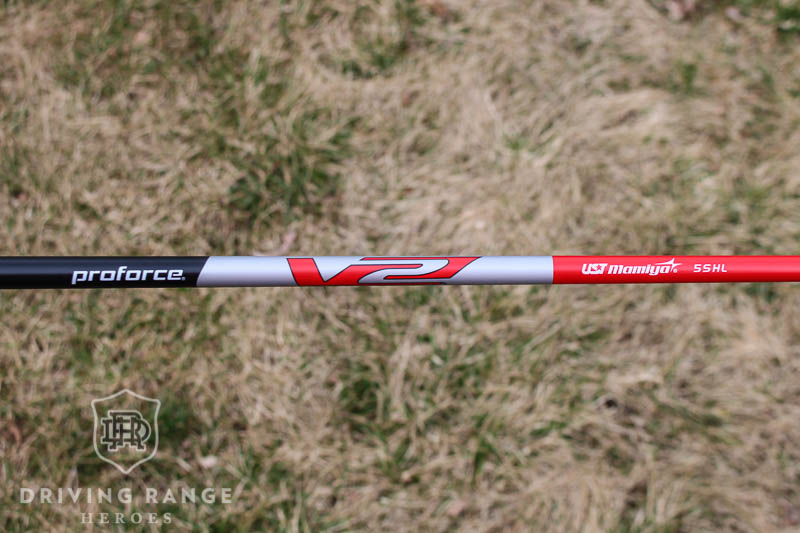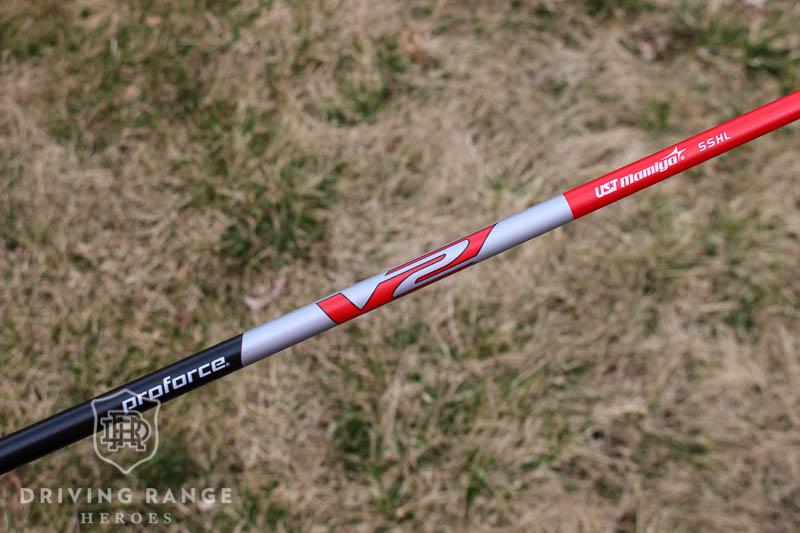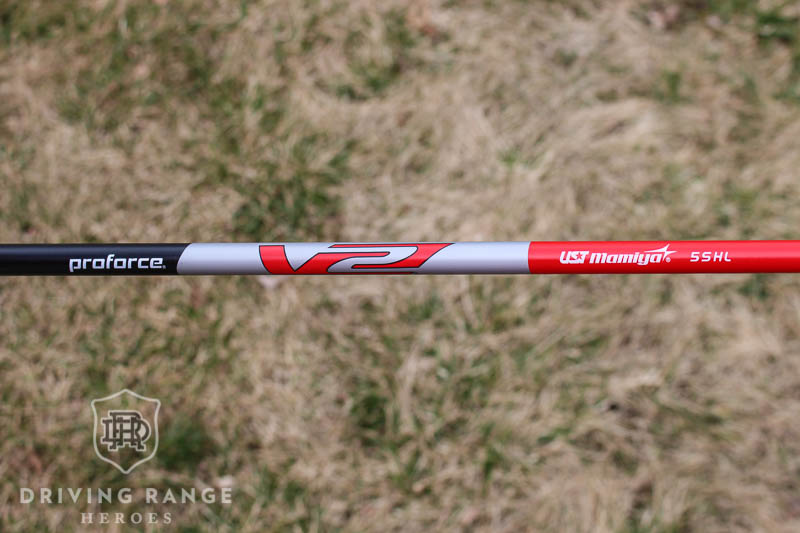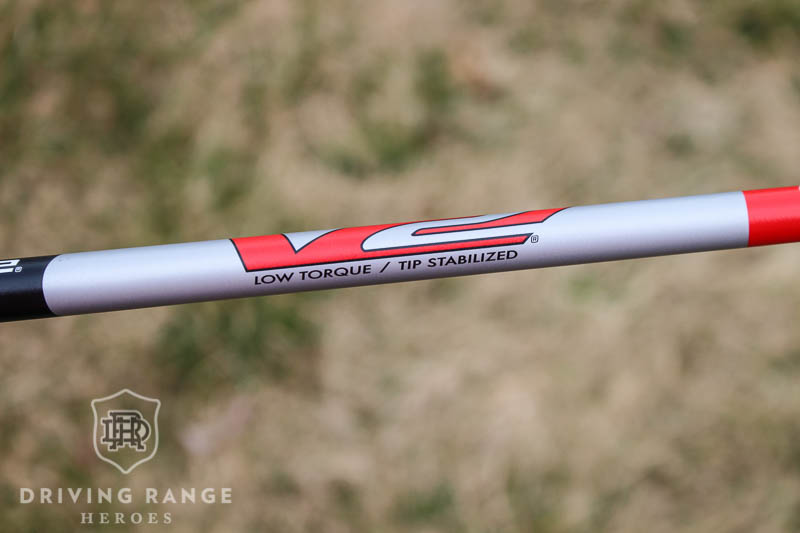UST Mamiya Proforce V2 & Proforce V2 HL Shafts
UST Mamiya offers their popular Proforve V2 shaft in two different options to help players achieve optimal launch for their swing. Players seeking/requiring a flatter trajectory with less spin will likely be a better fit for the UST Mamiya Proforce V2 shaft. Those seeking a higher launch and more carry should be better candidates for the Proforce V2 HL shaft. (HL meaning “high launch”.) Both shafts are made of “aerospace grade materials” with a low torque design for strong control and stability.
The Looks
Each of the UST Mamiya Proforce V2 shafts are differentiated by their colorways. The standard option is the classic yellow/silver/black color scheme that everyone knows and loves from UST Mamiya. The HL version comes in a colorway that I’m quite partial to – red/silver/black. Both have very traditional and familiar stylings, but with a slightly updated appearance from previous versions.
How Does it Feel?
When I hit a UST Mamiya Proforce V2 shaft, I generally know what to expect and there’s good reason for that. This shaft line has been around for a really long time and definitely has a signature feel associated with it. It’s a firm and responsive feel that is very stable. The big difference, we found, between the standard version and the HL version is the kickpoint. While both had a more “gradual” kick point rather than a sharp, distinct single spot, the differences in location was noticeable. The regular Proforce V2 kicked around the middle of the shaft and the HL was a bit lower.
Both also had firm, but not overly stiff tip sections. Just enough to help control the shaft. I’m not sure if we were just looking for it, but the HL profile did seem to have a softer tip section than the standard Proforce V2. That shouldn’t be taken as saying it was too soft, just softer than the other shaft designed to have a flatter trajectory. I would expect this from a higher launching shaft, so it makes sense.
On-Course Performance
Proforce V2:
| Club Speed | Ball Speed | Launch Angle | Spin | Carry (Yds) | Total (Yds) |
|---|---|---|---|---|---|
| 92.1 | 133.5 | 17.2º | 2693 | 212.3 | 232.7 |
Proforce V2 HL:
| Club Speed | Ball Speed | Launch Angle | Spin | Carry (Yds) | Total (Yds) |
|---|---|---|---|---|---|
| 91.3 | 132.4 | 17.8º | 2948 | 209.1 | 227.3 |
I enlisted the help of a trusted golfer to help with testing these UST Mamiya Proforce V2 shafts. This player swings his driver roughly 90 mph with a higher launch, which is helpful at his swing speed to generate a little more carry yardage. Interestingly, he launched both shafts about the same, but there was one major difference. Our tester was significantly more consistent with the Proforce V2 and had a much tighter dispersion than he did with the HL model. I assume the “firmer” profile was making it easier for him to consistently return the club to its starting position. The better, more consistent smash factor numbers with the standard model lead me to believe this to be the truth. These factors ultimately resulted in more speed, which means more distance. He also got a little more roll out from having slightly less spin.
One thing our tester pointed out was the Proforce V2 HL definitely seemed easier to launch. This aligns with my ongoing narrative of higher launching shafts often being easier to launch, not necessarily “automatically launching higher”. He felt his swing would adjust to each shaft to hit his typical trajectory windows, but the HL certainly seemed like it “wanted” to hit that higher window more naturally than the standard model. The biggest difference was that he felt more in control with the standard Proforce V2 and could swing it a little harder.
Final Thoughts – UST Mamiya Proforce V2 & Proforce V2 HL Shafts
Though the UST Mamiya Proforce V2 is available in a standard and high launch model, personal experiences can easily differ. It’s always important to make sure you do proper testing or get fit. As you can see from this review, many more factors play a role than what the shafts specs say on paper. Of course, if testing/fitting isn’t an option, the guidelines of a flatter trajectory or a higher launch are a good starting point.

